*NURSING > QUESTIONS & ANSWERS > Chapter 6--Nursing of Adults across the Life Span (All)
Chapter 6--Nursing of Adults across the Life Span
Document Content and Description Below
Chapter 6--Nursing of Adults across the Life Span MULTIPLE CHOICE 1. The nurse is reviewing the number of elderly adult clients who were admitted during the previous 3-month period with complic... ations from the seasonal flu. The nurse is reviewing which of the following illness patterns? 1. Prevalence 2. Incidence 3. Trends 4. Mortality rate PTS: 1 DIF: Apply REF: Contemporary Trends Related to Adult Behavior 2. An elderly client is admitted with worsening dementia. Which of the following health problems should the nurse consider as causing this client’s dementia? 1. Depression 2. Alzheimer’s disease 3. Memory impairment 4. Alcohol withdrawal PTS: 1 DIF: Analyze REF: Alzheimer's Disease 3. The nurse is instructing a client on ways to reduce the risk of developing coronary heart disease. Which of the following should be included in these instructions? 1. Limit smoking. 2. Exercise when able. 3. Keep BMI at or above 30. 4. Reduce cholesterol level. PTS: 1 DIF: Apply REF: Hypercholesterolemia; Obesity Rates; Coronary Artery Disease 4. When planning instruction for a client diagnosed with coronary artery disease, the nurse should identify which of the following risk factors that cannot be modified for the client? 1. Heredity 2. Hypertension 3. Sedentary lifestyle 4. Smoking PTS: 1 DIF: Apply REF: Coronary Artery Disease 5. A client tells the nurse that he is planning to retire and plans to become involved with charitable organizations. The nurse realizes this client is within which of the following stages of Levinson’s Theory of Adult Development? 1. Middle Age 2. Late Adulthood 3. Old Age 4. The Thirties PTS: 1 DIF: Analyze REF: Theories of Adult Development 6. A client tells the nurse that she began having a particular health problem around the onset of the Iraqi War. The nurse determines that the client is utilizing which of the following perceptions of time? 1. Life time 2. Social time 3. Historic time 4. Actual time PTS: 1 DIF: Analyze REF: Table 6-2 Perceived Times in Adult Life 7. The nurse is instructing a 55-year-old client on ways to reduce the development of illnesses that are the leading cause of death for persons in the same age group. Which of the following is the nurse instructing this client? 1. Need to wear seat belts when operating a motor vehicle 2. Reduction of alcohol intake 3. Need for a annual mammogram, Pap smear, and colonoscopy every 10 years 4. Weight reduction PTS: 1 DIF: Analyze REF: Table 6-3 The Ten Leading Causes of Death in Americans 8. A middle-aged client tells the nurse that she is scheduled for a treatment to reduce facial wrinkles and the cost is much less than a plastic surgeon. Which of the following should the nurse respond to this client? 1. “I would like to schedule the same procedure for myself.” 2. “Did you research why the cost is less than a plastic surgeon’s?” 3. “It is so much better to avoid surgery if possible.” 4. “I am sure you will feel much better afterwards.” PTS: 1 DIF: Apply REF: Patient Playbook: Cosmetic Surgery and Treatments 9. The nurse is assessing a client who experienced bariatric surgery 5 years ago. The nurse would consider the client’s surgery as successful when which of the following is assessed? 1. Current weight is 100 lbs less than the starting weight of 600 lbs. 2. Current weight is 300 lbs with a starting weight of 450 lbs. 3. Current weight is 200 lbs with a starting weight of 400 lbs. 4. Current weight is 50 lbs less than the starting weight of 400 lbs. PTS: 1 DIF: Analyze REF: Bariatric Surgery 10. A 35-year-old female client tells the nurse that she is having difficulty managing her job, family, and the needs of her aging parents. To help this client avoid chronic illnesses later in life, which of the following should the nurse instruct? 1. Plan to change jobs to reduce stress. 2. Do not smoke; keep weight within normal limits; exercise. 3. Enlist the help of her children to aid with the aging parents’ care. 4. Consider not working until the children are raised. PTS: 1 DIF: Apply REF: Health and Illness Trends for Young and Middle-Aged Adults 11. An elderly client tells the nurse that he does not drink much fluid because it causes him to not be able to “control” his urine. Which of the following should this nurse assess first in this client? 1. Hypertension 2. Constipation 3. Dehydration 4. Lower extremity edema PTS: 1 DIF: Apply REF: The Frail Elderly 12. An adult daughter drives, completes laundry, grocery shopping, and banking for two elderly parents. Which of the following should the nurse assess for in the adult daughter? 1. Malnutrition 2. Dehydration 3. Sensory deprivation 4. Caregiver role strain PTS: 1 DIF: Apply REF: Chronically Ill Older Adults 13. The nurse is considering a health promotion program for a middle-aged adult. Which of the following should the nurse assess prior to planning this program? 1. When are you going to retire? 2. How many hours of sleep do you get every night? 3. What motivates you to learn something new? 4. How much exercise do you get every day? PTS: 1 DIF: Apply REF: Patient Playbook: Health Promotion Education MULTIPLE RESPONSE 1. The nurse is concerned that a client is developing metabolic syndrome. Which of the following did the nurse assess in this client? (Select all that apply.) 1. Elevated high-density lipoprotein level 2. Blood pressure 150/88 mmHg during three different assessments 3. Fasting glucose 120 mg/dL 4. Poor appetite 5. Abdominal obesity 6. Elevated triglyceride level PTS: 1 DIF: Analyze REF: Metabolic Syndrome 2. During the assessment of a client, the nurse becomes concerned that the client is at risk for suicide. Which of the following assessment findings would support the nurse’s conclusion? (Select all that apply.) 1. Alcohol use 2. Use of illegal substances most days of the week 3. Recent death of spouse 4. Laid off from employment 6 months ago 5. Weather preventing the planting of an annual garden 6. Family scheduled to visit in a few weeks PTS: 1 DIF: Analyze REF: Suicide Incidence Rates 3. The nurse is instructing a client on ways to modify the diagnosis of hypertension. Which of the following should the nurse include in these instructions? 1. Weight reduction 2. Low-fat, high-fiber diet 3. Relocation to a safer community 4. Employment counseling 5. Advance directives 6. Increasing activity and exercise throughout the day PTS: 1 DIF: Apply REF: Hypertension 4. The nurse is planning an instructional session for an 80-year-old client. Which of the following strategies would be helpful for the nurse to use? (Select all that apply.) 1. Limit distractions. 2. Use a well-lit room. 3. Use verbal instructions and follow-up with written information to reinforce. 4. Use computer-assisted instruction. 5. Plan for one long session. 6. Include a family member if possible. PTS: 1 DIF: Apply REF: Nursing Strategy 360: Strategies to Use When Interacting with the Older Adult Patient 5. Which of the following should the nurse assess regarding an elderly client’s ability to adhere to a prescribed medication regime? (Select all that apply.) 1. Average hours of sleep each night 2. Using medications prescribed for themselves 3. Taking full doses and not cutting doses in half 4. Sufficient funds to purchase prescriptions 5. Total caloric intake each day 6. Recreational activities PTS: 1 DIF: Apply REF: Box 6-2 Medication Use by Older Adults [Show More]
Last updated: 2 years ago
Preview 1 out of 6 pages
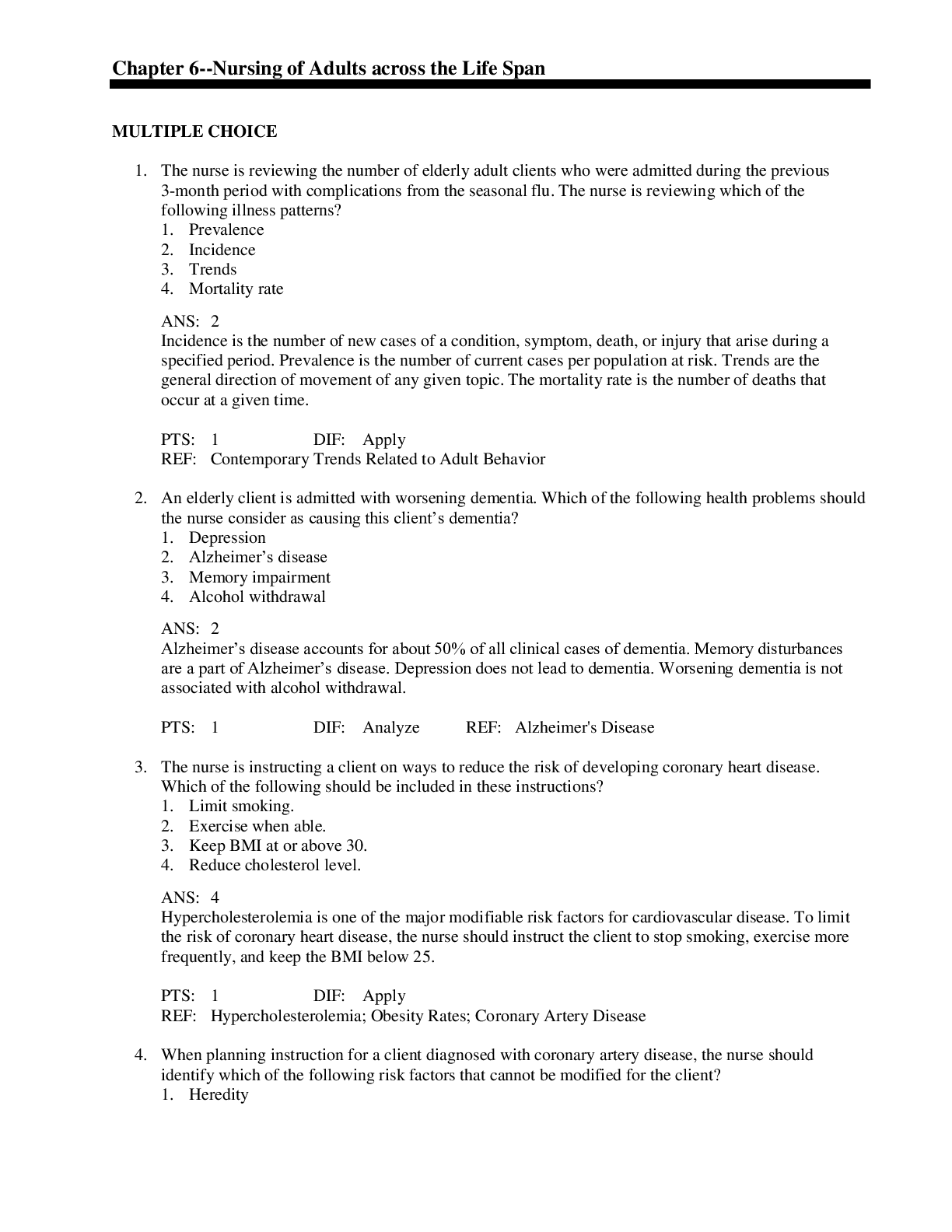
Buy this document to get the full access instantly
Instant Download Access after purchase
Buy NowInstant download
We Accept:

Reviews( 0 )
$4.50
Can't find what you want? Try our AI powered Search
Document information
Connected school, study & course
About the document
Uploaded On
Jan 21, 2020
Number of pages
6
Written in
Additional information
This document has been written for:
Uploaded
Jan 21, 2020
Downloads
0
Views
116

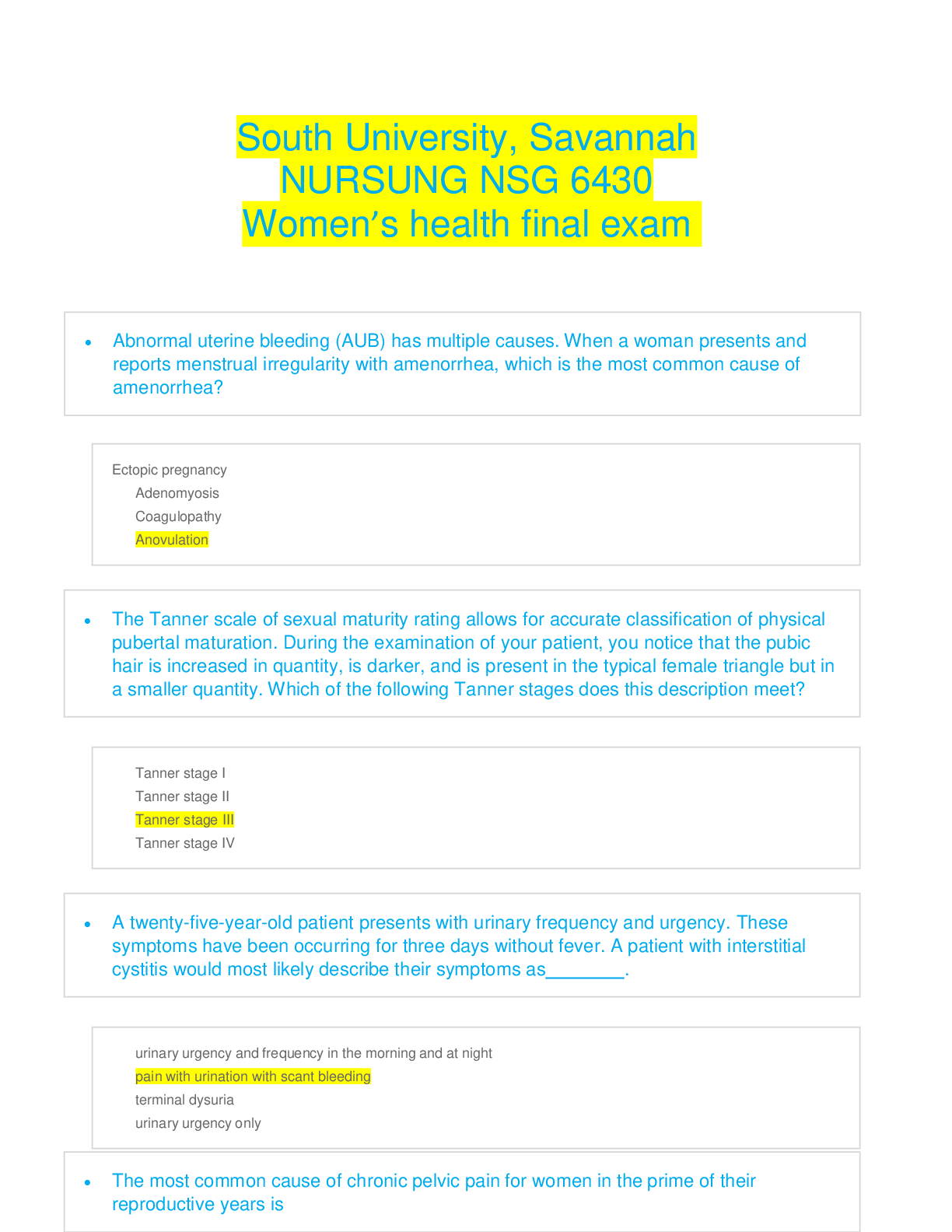

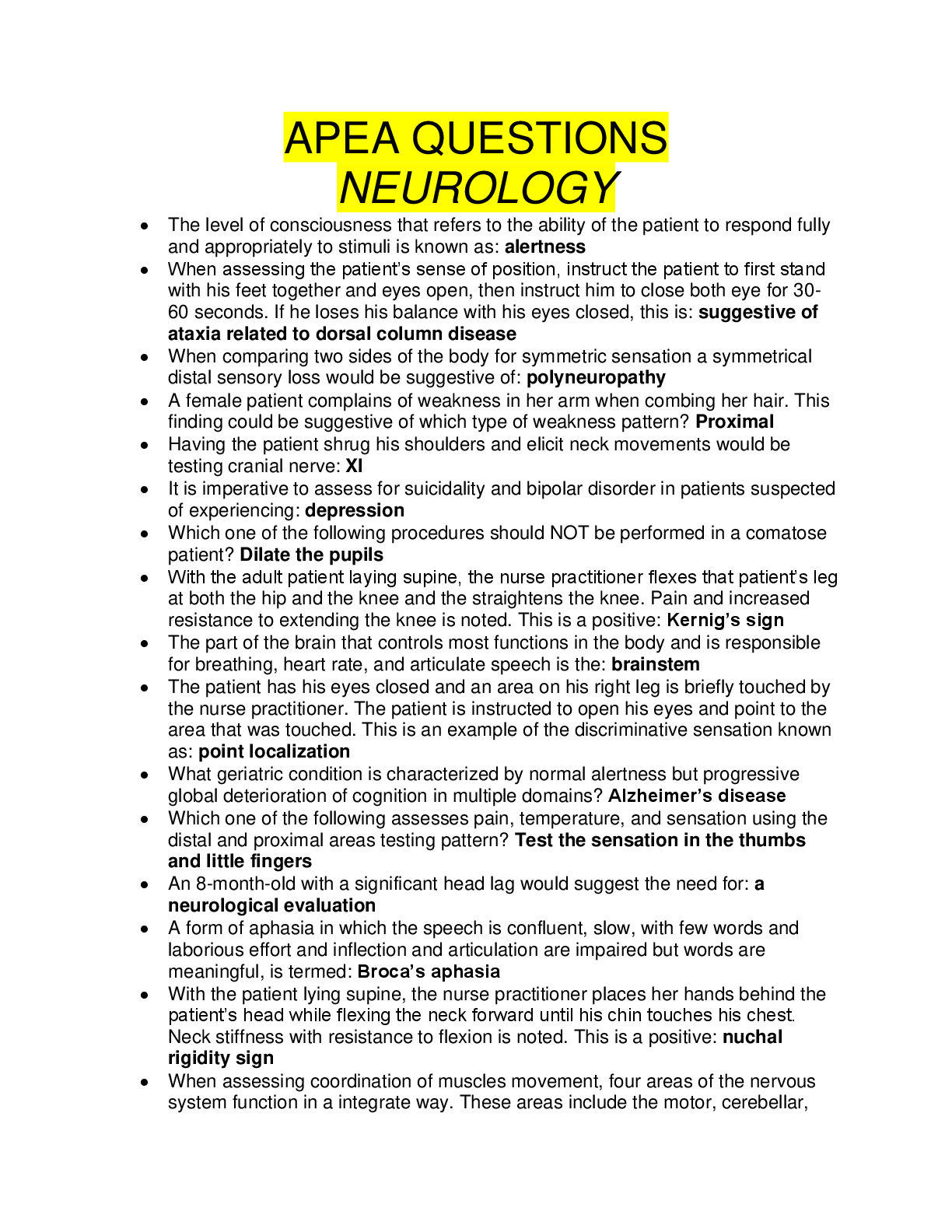

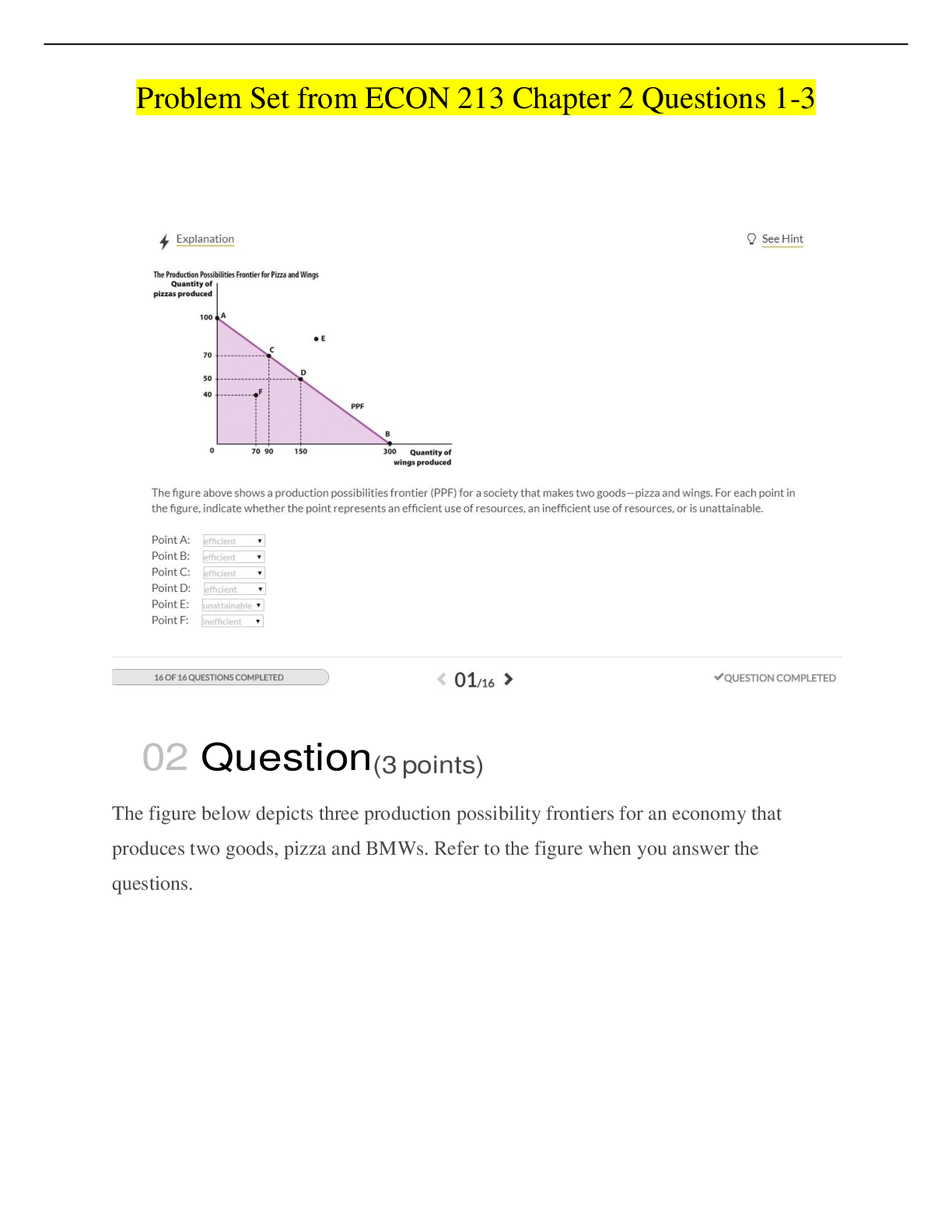
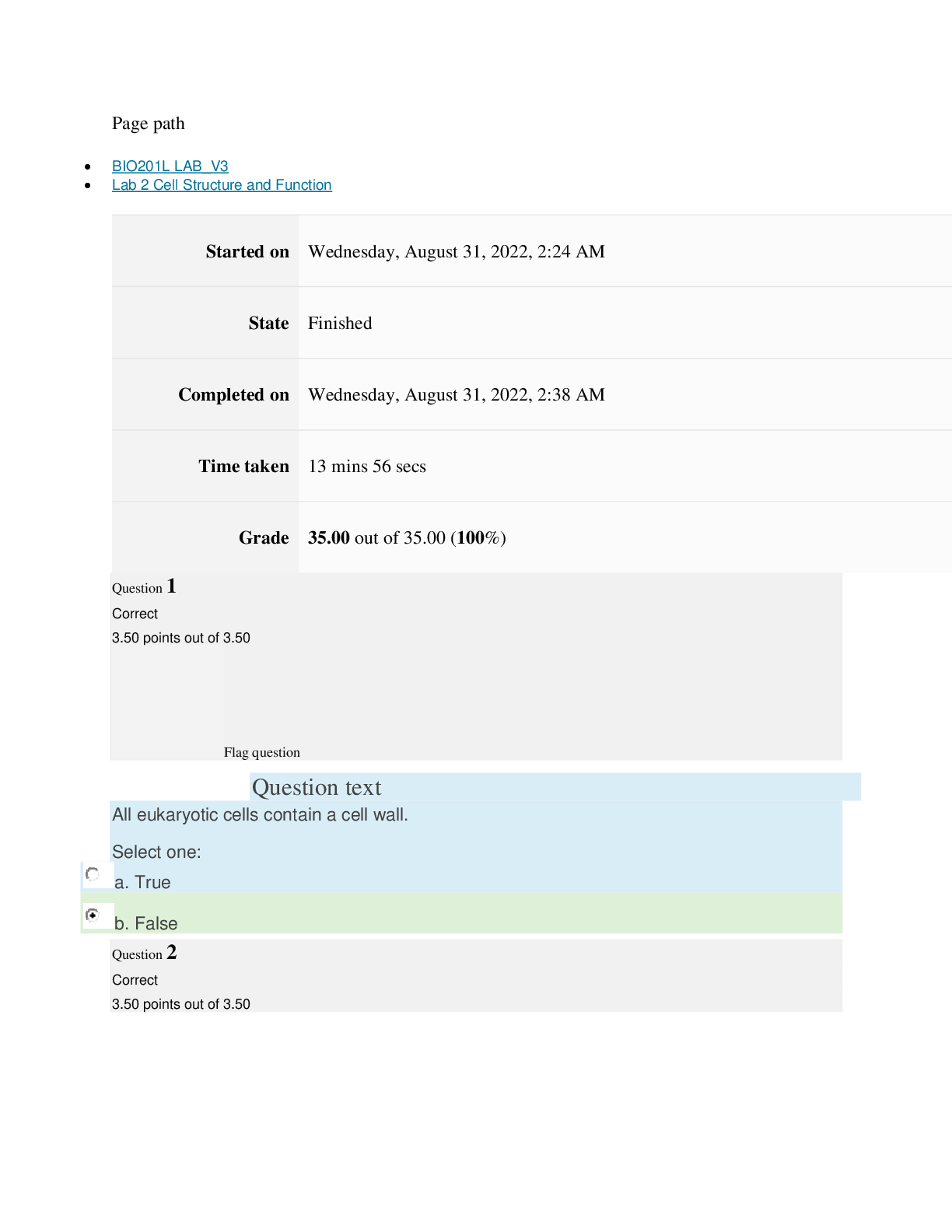

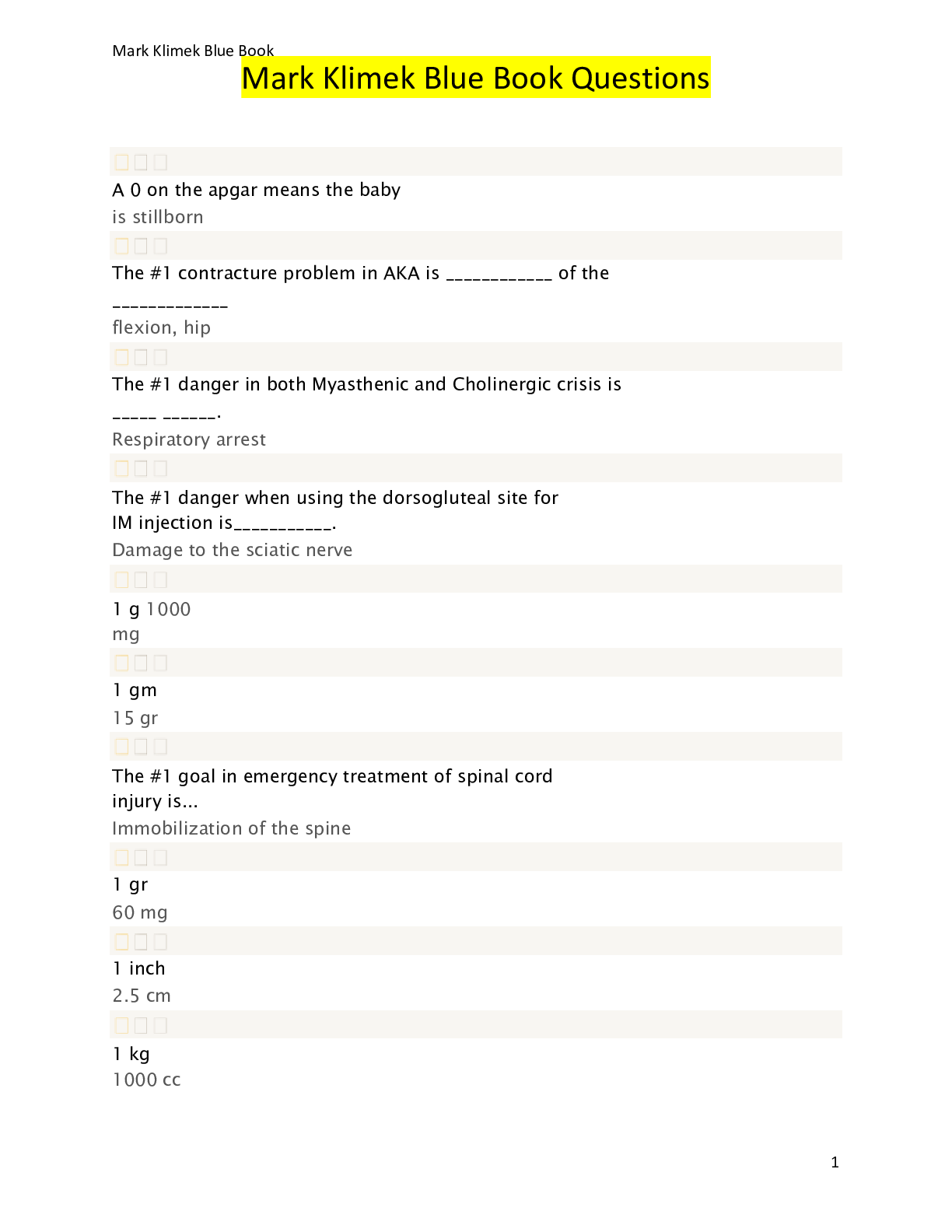

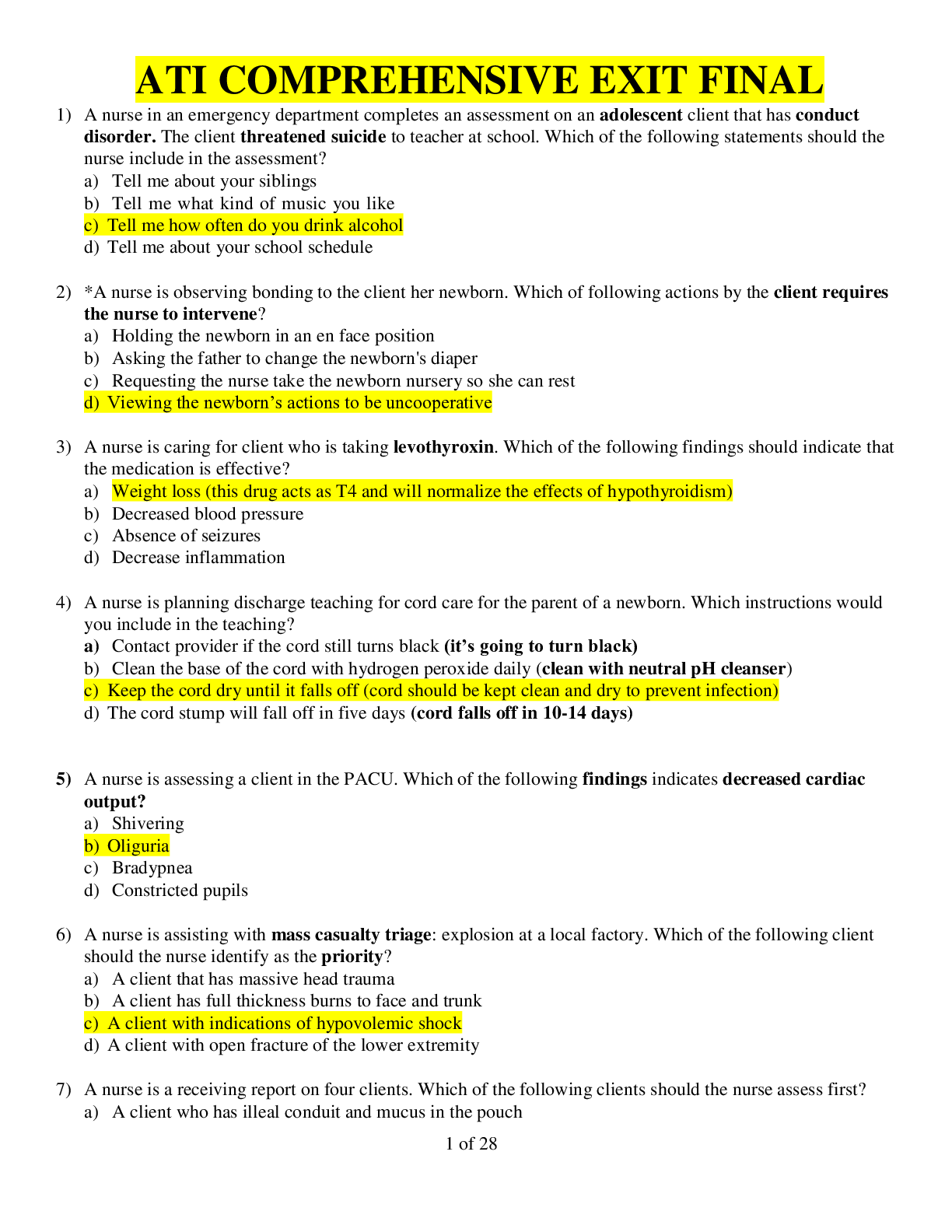


.png)

.png)


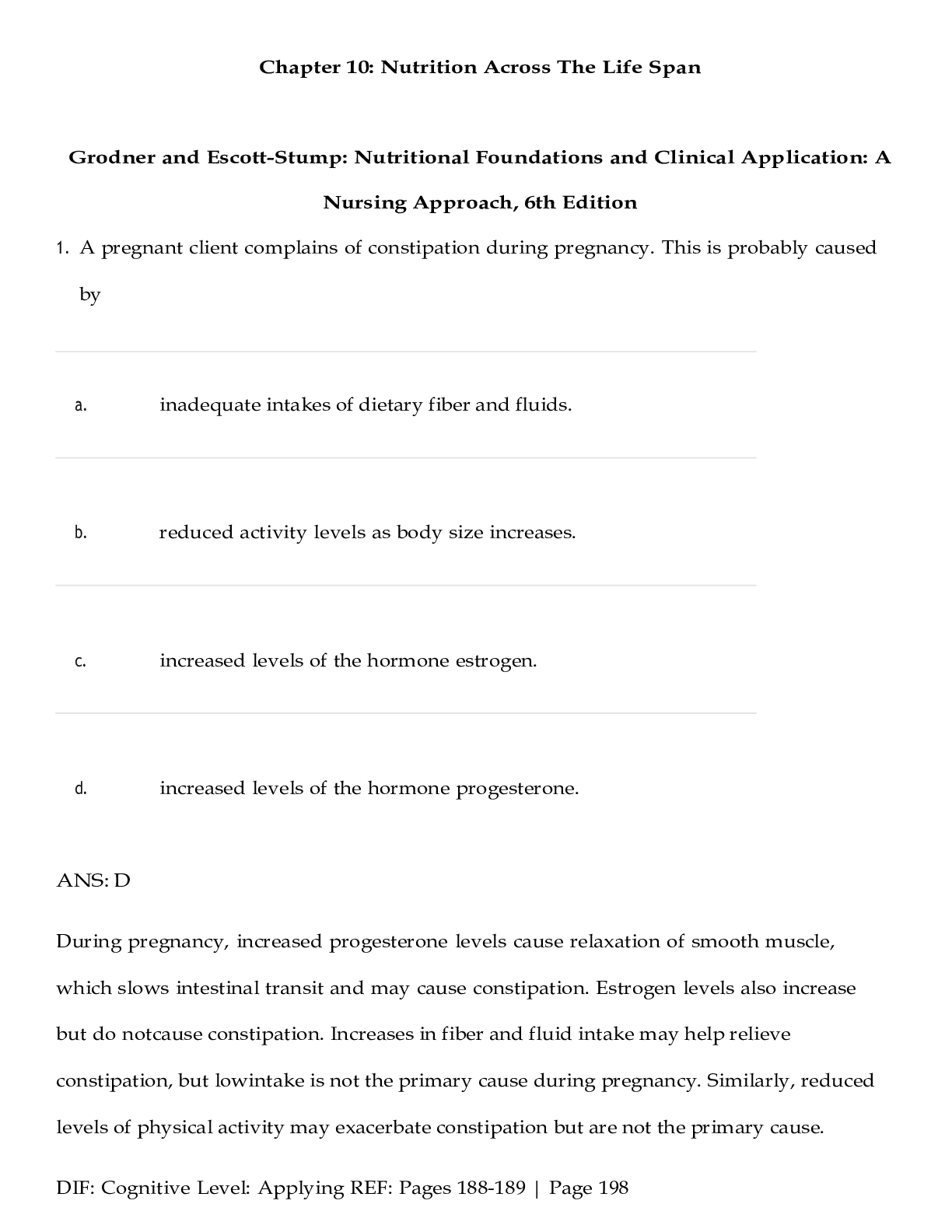
.png)




